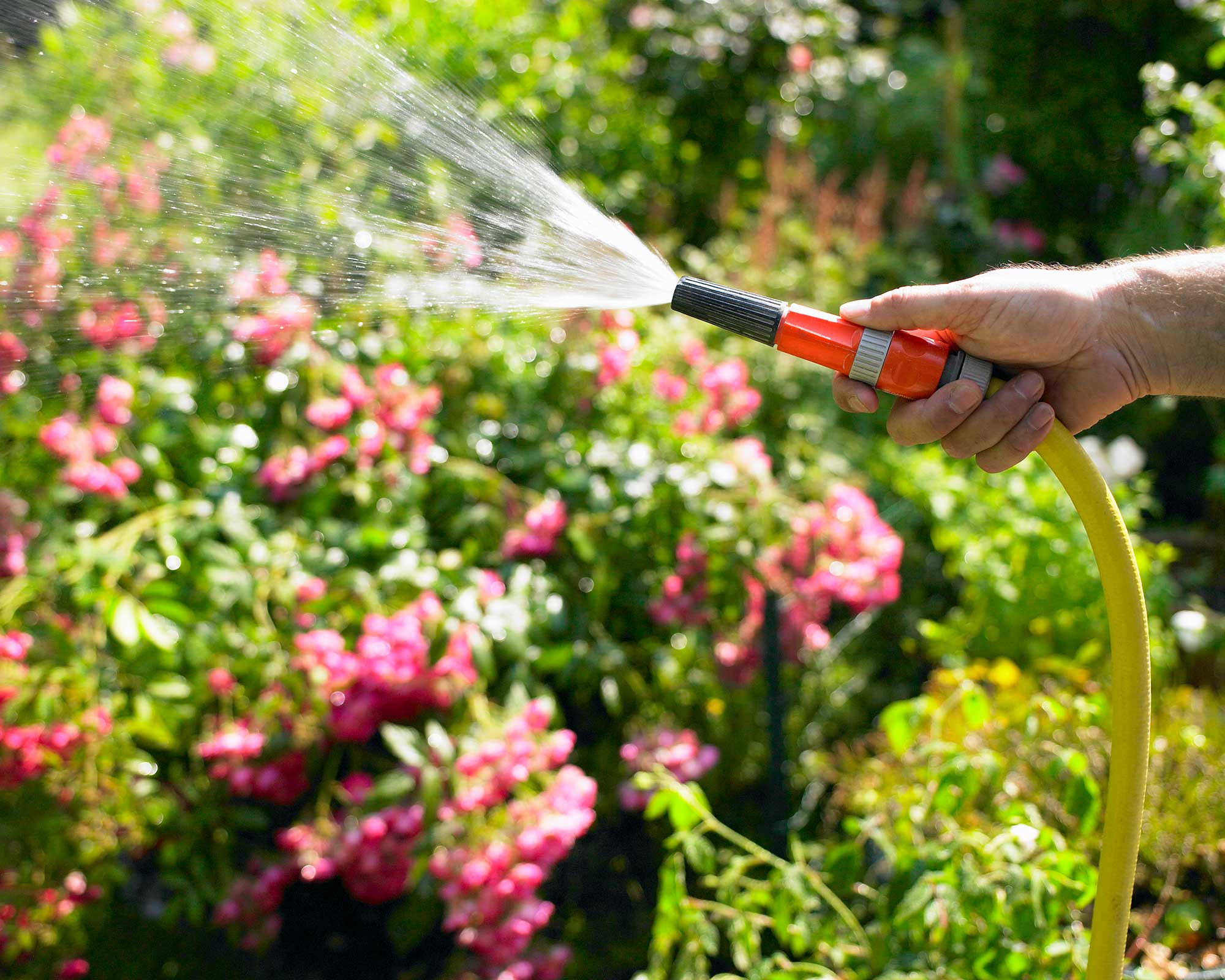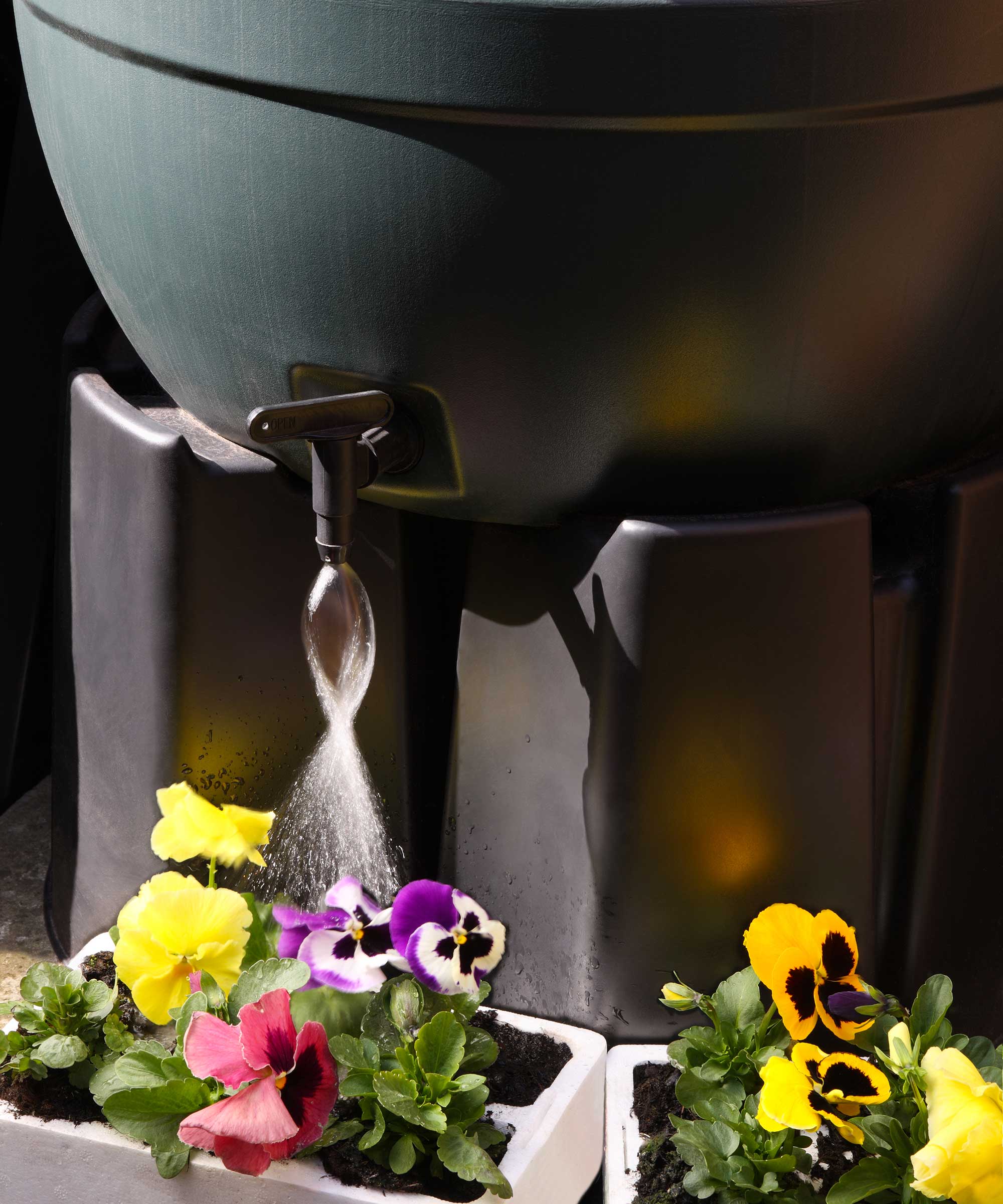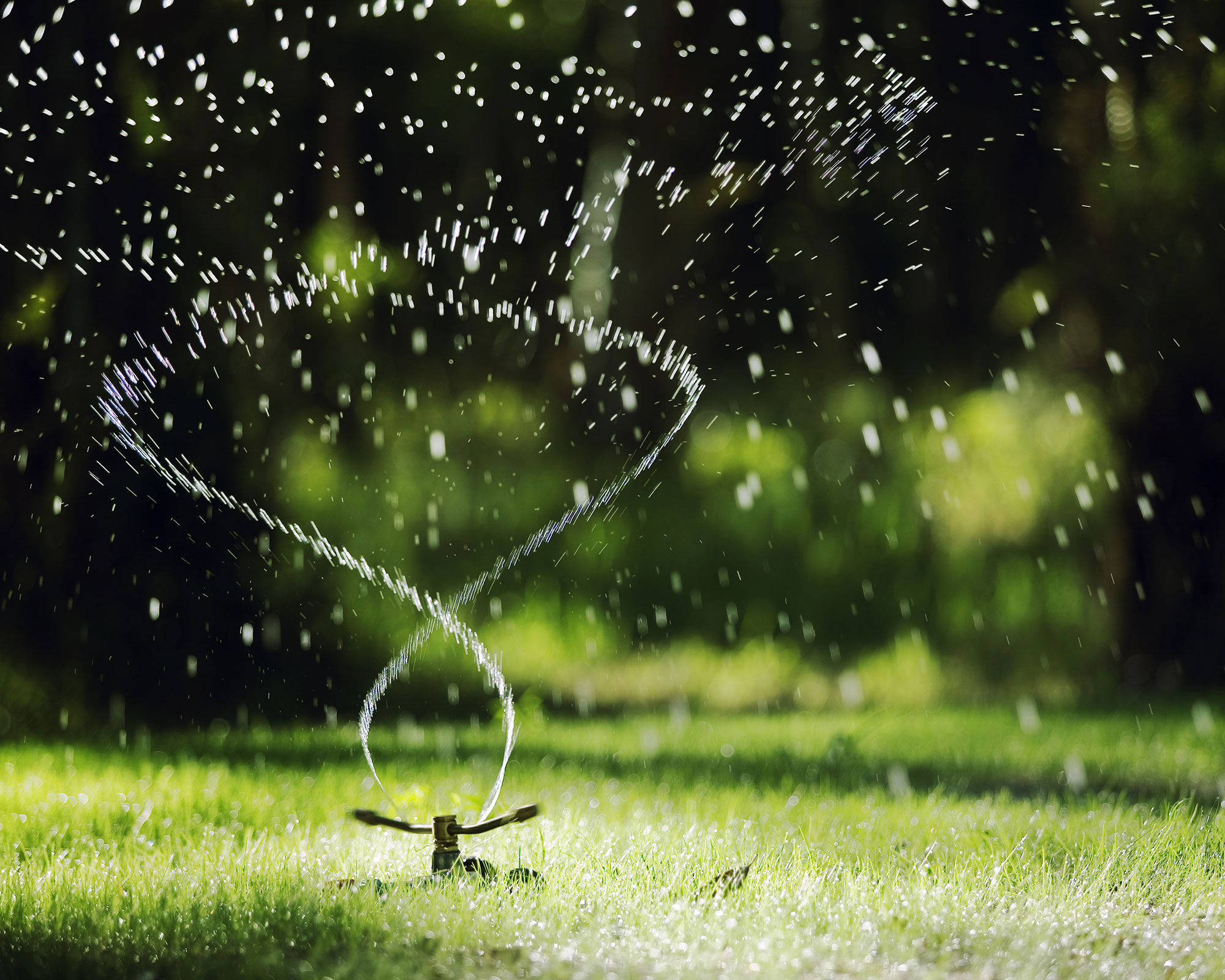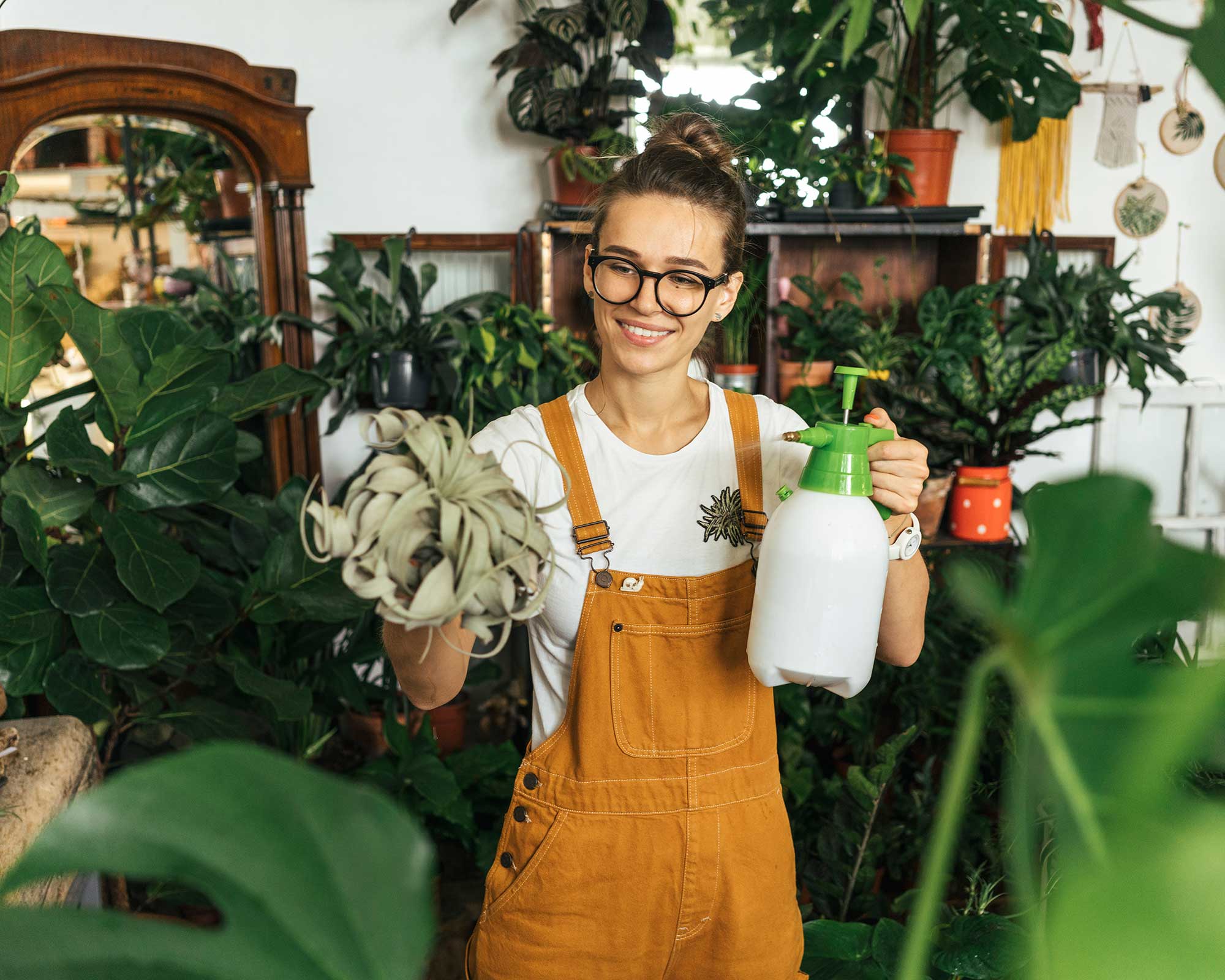Watering plants: top tips on what to do, when to do it, and which tools to use
This guide on watering plants will help you keep your garden plants (and those in the house) looking their best all year

Holly Crossley

Watering plants is a crucial task to keep your garden and indoor greenery looking happy and healthy. Newly-planted trees and shrubs, plus other freshly-planted areas need to be kept well-watered, but so do annual flowers, perennials, pots, containers, and hanging baskets, plus any vegetables you're growing. In other words, there could be plenty in your home that needs frequent attention from a watering can, hose, or sprinkler.
There's more to it than you might first think. Knowing how much to water, the best ways to do it, how often, and even the optimum time of day are all key factors in getting the job done effectively. Plus, with water supplies under pressure due to climate change, it's important to learn how you can use less mains water and turn to other, more eco-friendly sources to keep plants growing.
We've got the lowdown on watering your outdoor plants, as well as expert tips on keeping your houseplants healthy, too. And, if you want to make light work of your watering tasks, our best garden hose and best garden sprinkler buying guides are sure to come in handy.
What tool should you use for watering plants?
Using a watering can is – to no surprise – a great approach to watering plants.
It makes it easy to direct the water to the roots of your plants, where it's needed. Water the stem bases, making sure you move the watering can around so that all root points are nourished properly, advises the experts at Haws, purveyors of hand-crafted watering cans. 'Delivering water to one place can stunt the growth of other root systems as they are unable to absorb the nutrients from the soil.'
The RHS advises avoiding plants' leaves when watering. 'Wet or humid foliage will encourage fungal problems and evaporation from the surfaces.'
Looking for alternatives to a watering can? You can use a soaker hose. With these, water can seep through along the length of the hose thanks to their porous layers so that it reaches the roots of the plants you want to water. Or, try a drip irrigation system of a scale that suits your plot, while sprinklers can be useful for lawns. For container displays, you could also consider self-watering garden planters, which allow the roots of the plants to draw water from a reservoir.
If you have a large amount of watering to do, you might want to use a garden hose. Make sure you have a spray attachment on the end – an aerated version will cut down your water use. Be sure you direct water to the base of the stems, as above.

How frequently to water your plants
There aren't universal rules on how frequently to water plants, unfortunately. Plants have different needs, and the soil type and weather will affect what you need to do, too.
The fact that you'll have to water more when it's hot and sunny is unlikely to surprise you – in the height of summer most plants will benefit from being watered once a day. Bear in mind that windy weather also means plants need more water. And, even if it rains, pay attention to how good the rainfall is. If we're talking light showers, they won't do much for your plants' roots.
In terms of soil, those that are sandy and light tend to need more frequent but lighter doses of water than heavy, clay ground.
New plants also require more water, as do larger plants with more leaves. If you're tending to the best vegetables to grow in raised beds, you'll also need to give them plenty of H2O.

How to water plants in containers
If you've brought container gardening ideas to life in your plot, the planters will need extra attention with your watering can.
'Soil in containers generally dries out a lot quicker than in flower beds, so you may need to water them more frequently,' says the experts at Haws. 'Generally, the smaller the container, the more often it will need watering, so plants have a constant source of nourishment that will help them grow.'
In terms of how much to water your plants, the RHS suggests adding 10% of the volume of the container at each watering – for example, 1 liter of water for a 10-liter pot. Pop a saucer beneath the pot to catch any excess and allow it to be re-absorbed. It's important not to overdo it – waterlogged soil is detrimental to many plants' health. It's also important to pick pots that have drainage holes so that they don't become over-saturated during bouts of rain.

Which times of the year – and day – to water plants
You're most likely to need to water the garden from late spring to early fall when the weather is at its warmest, but don't count out the possibility from mid-spring onwards. You might have to do it at other times of the year, too, depending on the weather conditions where you live.
To check whether your borders need watering, 'look at the soil about a spade-deep down,' says the experts at Hozelock. 'Only water if it's dry – if it's already damp, there is no need.'
What time of day to water is a more straightforward issue. 'Water at the start or end of the day when the sun isn't so hot,' says Hozelock.
The experts at Haws particularly recommend watering plants early on in the day, 'as the soil will still be cool, giving water the best chance of traveling down to the root before the sun evaporates it.
'Early morning watering also means that your plants will have enough water to last throughout the day, especially during hot weather, even if the top of the soil is dry to touch,' they add.
If you don't often have time in the morning or evening to be tending to garden chores, you could invest in an electronic water timer, attached to your watering system. These will sense when the sun comes up and goes down and water accordingly: they're perfect if you're looking for low-maintenance garden ideas.
You can find more in-depth detail on when is the best time to water plants in our dedicated feature.

The best water to use for watering plants
Cutting down on the use of mains water for the garden is important in an era of climate change and, if you're on a water meter, it's a costly way to keep plants growing anyway. If you do use tap water, bear in mind that using softened water isn't advisable, so take the water for your garden straight from the mains rather than providing plants with water that's gone through your water-softening unit.
The best resource to use for your watering tasks is rainwater, so get yourself a water butt – or more than one. If they have gutters and a downpipe, you could collect water via the runoff from your shed's roof or other garden building as well as from the house. Want to go one step further for a more sustainable garden? You could also re-use water from cleaning veggies and salad before cooking, or get creative with rain garden features.
If there's a water shortage, you could use gray water: that's water from the shower, bath, washbasins, and washing machine rinse cycles. Soaps and detergents shouldn't cause plants problems, just avoid using gray water for your grow-your-own produce. Also, gray water should always be used quickly and not stored, as bacteria in it will multiply swiftly. Water containing bleach, powerful cleaning products, and from WCs – so-called black water – is always a no-no.
'What about paddling pool water?', you may ask. If it's a small paddling pool that you've recently filled then that should be fine, but in general, we don't recommend using paddling pool water in the garden because of the cleaners you'll have used to keep the pool pristine.

Should you water a lawn?
Care should be taken to ensure lawns are kept hydrated during hot summer weather.
The Grass People's lawn care tip for summer is to water grass once a week if it hasn't rained. A garden sprinkler is the perfect tool for this.
But, be careful not to flood the grass which can damage the turf. 'In extreme summer heat, a good guide is 20 liters of water a week for every one meter square of lawn,' they advise. 'You can tell your lawn needs a little extra water if the grass begins to turn yellow or brown.'
In long periods of drought, the soil of your lawn may become hard and dry, making it difficult for water to permeate it. In this case, 'it's important to aerate with either a plug aerator or a spike aerator, which create holes in the ground allowing water and oxygen to filter through,' they recommend.

Tips for watering indoor plants
When it comes to the best indoor plants, watering is, of course, a year-round task. As with garden plants, individual houseplants have different requirements, so do adapt your routine to the species.
Generally, over-watering is a danger with indoor plants, so let the compost dry a bit before you water. Water until the compost is moist, letting the water drain into a saucer or the sink.
In winter, most houseplants need less water than they do in the other seasons of the year, so reduce your watering schedule accordingly.
It's a good idea to let water come up to room temperature before using it on your houseplants. Using rainwater is an even better idea and, as with the garden, if it's tap water you’re putting on to plants, avoid softened water.

Should you mist your houseplants?
Many houseplants originate from tropical regions, where humidity is high. However, the air in our homes, especially once you factor in central heating and air-con, tends to be rather dry.
Misting the leaves and soil of your plant every couple of days is a great way to get around this, as it offers houseplants a more suitable growing environment. What's more, it helps to reduce the risk of overwatering them.
Ferns, orchids, and begonias are just some of the many varieties that will benefit from misting, as are all the other best plants for bathrooms and kitchens which thrive in humid conditions. Avoid misting your succulents and cacti which prefer drier air, however – doing so can lead to rot.

What are the signs that you're not watering your plants enough?
Wondering which signs to look out for to check if you're watering plants enough? These characteristics are a giveaway:
- The leaves are dry, drooping, and curling.
- The soil beneath feels dry when using the touch test. To do this, push your finger down into the compost or soil to at least knuckle depth to see if it's damp, says the RHS.
- The plant is wilting or no longer standing upright.
- Growing speeds have reduced more than expected, or perhaps fewer fruits and flowers are being produced.
- Your containers feel lighter in weight.

More top tips for watering plants
Looking for more useful advice for watering plants? Try these tips from Hozelock:
- Place a potted plant under your hanging baskets when watering them. That way, the pot can soak up the excess water that falls from the basket.
- Try to remove as many weeds as you can from your borders, as they will be sapping water from the soil (and from the plants that are meant to be there). Need a hand blitzing those pesky intruders? Our guide on how to get rid of weeds is a great place to start.
- Mulching with a layer of homemade compost or well-rotted manure around your plants will help them retain moisture. And as a bonus, it will suppress weeds, too.
- Watch out for leaky watering systems. Dripping or leaking connectors from a tap to your watering tool can waste a lot of water over time. If your connector seems to be leaking, the O Rings on your watering tool may have perished or become damaged. Replacing the O Rings can quickly fix this issue and is simple to do.
- If you don't have much time for watering, or simply want to use less water in your plot, there are plenty of drought-tolerant plants that are simply beautiful and work well in prairie-style or Mediterranean schemes.
Shop our top garden hoses

Sarah is a freelance journalist and editor writing for websites, national newspapers, and magazines. She’s spent most of her journalistic career specialising in homes and gardens and loves investigating the benefits, costs and practicalities of home improvement. It's no big surprise that she likes to put what she writes about into practice, and is a serial house revamper.
- Holly CrossleyActing Deputy Editor
